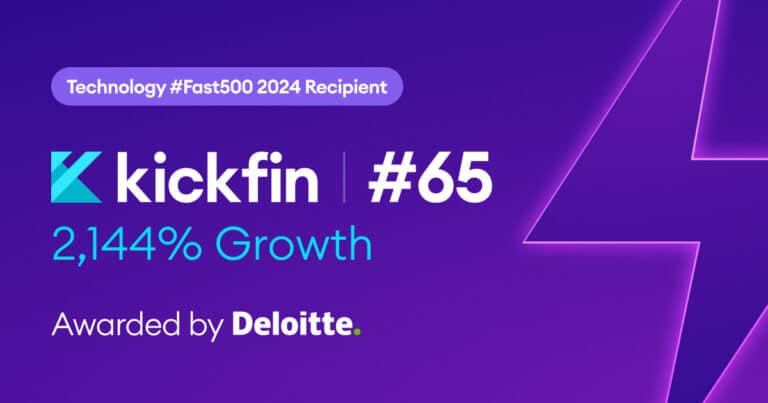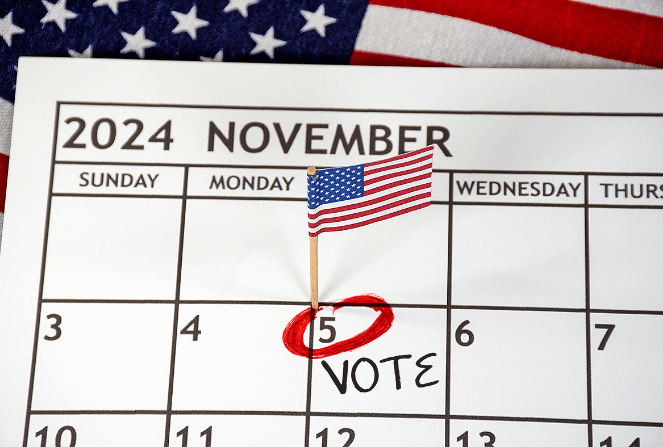With ever-changing legislation — and mounting litigation — service fees and tip policies have become a hot topic.
In this Hot Tips & Takes interview, Beth Schroeder, a partner at Raines Feldman LLP, addresses common misconceptions that can get restaurant operators, owners and execs into legal hot water.
Beth is a preeminent Labor & Employment counsel with more than 30 years of experience in representing employers in all aspects of employment and labor law. Read what she has to say about restaurant service charges, surcharges and tip pools below. (Keep in mind: while resources like this are a good place to start evaluating your policies, they aren’t intended as legal advice! If you have questions or concerns, seek legal counsel, ideally from an attorney or firm with hospitality expertise.)
How are restaurants dealing with minimum wage hikes, labor shortages, and other challenges that have been putting a financial strain on the industry?
If you don’t think you’ll be taking these costs on as a patron, think again. When labor goes up, no matter what industry you’re in, most likely that increase is coming back to the consumer.
Between Covid, minimum wage hikes, sick pay, the ACA…this industry has been through a lot. Restaurants felt like they were laid bare — so they have no choice but to ask their patrons to share in some of that increased burden. It’s not just increased menu prices, although that’s certainly happening. But we’re also seeing service charges, surcharges, and changes to tip policies.
Let’s start with service charges. How are service charges supposed to work, and how do restaurants get it wrong?
Terminology is a big issue. Service charges, surcharges, auto-gratuity — they’re often used interchangeably, but they’re all used differently, and they all have different legal stipulations and requirements.
Service charges are not gratuities. Instead, a service charge is a set percentage that is added to your check. It’s assessed by a restaurant, and it’s placed on the menu like any other menu item. Three things to keep in mind about a service charge:
- It’s should not be negotiable.
- There’s a sales tax placed on it.
- If handled correctly, it is the property of the restaurant.
When you say it is the property of the restaurant, does that mean the service charge does not go to the employees?
Any revenue generated from a service charge is the property of the restaurant, so the restaurant can decide what to do with it They don’t have to pay any of it out to employees, but they can.
This is a key difference between a service charge and “auto-gratuity.” Auto-gratuity is really a misnomer, because the word “gratuity” itself implies that the money left by the patron is left at the will of the patron, and therefore, should be treated as a tip and the property of the employee. But the term “auto” suggests that the money is mandated, and thus, is more like a service charge. Restaurants have used this term for years to refer to a service charge, but as you can see, it is confusing nomenclature, to employees, guests and the courts. I highly suggest as an industry we get away from using this term.
Keep in mind: If restaurants choose to give some percentage of their service charges to employees, those funds must be brought in as wages, not gratuity. That money paid to employees will be treated paid as wages to the employees and will increase their regular rate, for purposes of issues like overtime, meal breaks and the like.
It’s incredibly important for restaurants to be transparent as to how they’re using the service charge. If it’s not going to employees, or if only a small percentage goes to employees, guests need to know that so they can add their own gratuity. It’s wise for restaurants to post those details on their website, menu, etc. Employees should also be made aware, to avoid any claims of uncertainty in litigation.
So, what’s the difference between a service charge and a surcharge?
Like a service charge, a surcharge is a set percentage that’s added to the guest check. Whereas a service charge can be up to 20% of your total bill, a surcharge is usually a smaller amount, say, up to 10%, so as usually not to supplant the tip, but seen as paid to the restaurant in addition to a tip.
These days, many restaurants like to defend the use of adding a surcharge onto their bill by qualifying the surcharge with words like “healthcare surcharge,” or “PPE surcharge.” The use of those qualifiers are fine, but then the restaurant will be limited to using the funds generated from the surcharge solely for that purpose, or risk lawsuits from local attorneys or even district attorneys for consumer fraud lawsuits. For example, starting in 2020, some restaurants instituted “Covid surcharges,” and that money went toward PPE and additional sanitation supplies. Balance the value of adding this language – I’ve suggested just sticking the term “surcharge” and giving yourself more flexibility.
We’re seeing both service charges and surcharge mostly in areas where the minimum wage is going up.
Is there a downside to leveraging service charges or surcharges?
No matter what, patrons will ultimately end up paying for rising costs of goods and services. As opposed to constantly playing with menu prices, service charges and surcharges can be easier to shift around as your business and the market change. And sometimes restaurants think that keeping menu prices stable makes them more competitive, even if it all comes out in the wash.
On the flip side, both service charges and surcharges can blindside patrons when they see an extra charge on their check. And while restaurants are required to communicate what surcharge funds are going toward, service charges aren’t required to have the same level of transparency. Both have led to lawsuits where employers have been accused of misleading employees or patrons or of misusing funds.
That’s why it’s so important to ensure that you’re being completely transparent with both employees and patrons. I.e., be clear about the purpose of the charge, and ensure that the funds are used in that exact manner.
Let’s talk tips. How are tips different than service charges and surcharges, in terms of how restaurants can use the funds?
Service charges and surcharges are predetermined charges mandated by the restaurant, and they belong to the employer. When paid to the employees, they also become wages and can be used to offset minimum wage. Tips, on the other hand, belong to employees — not employers, not management — period. They cannot be retained by the restaurant nor used to offset wages in any manner, although employers are responsible to see that employees accurately report their tips for tax purposes.
Why are we seeing more tip pools (and more lawsuits around tip pools) lately?
Tip pooling requires tip-eligible workers to pool all or a portion of their tips together at the end of a shift. The tips are then redistributed (often equally) among all tipped employees. Employers and management absolutely cannot participate in a tip pool, but restaurants CAN mandate a reasonable tip pool under federal and most state laws.
Many restaurants misunderstand the rules around tip pooling and shy away from it. But in most states, like California, employers are permitted to be actively involved in administering tip pools and tip sharing programs, so long as they follow the rules about who can participate in those tip pools and to what percentage.
Until recently, the rules about allowing back of the house or kitchen employees until a tip pool were murky. However, that rule was officially changed and approved by the Department of Labor in 2018. It’s now allowed in states where there isn’t a tip credit — so, primarily the West Coast. Restaurants are starting to dip their toes into it, and it has become much more popular during the pandemic.
Tip pooling can help to increase earnings of restaurant workers, especially those who might not be as customer-facing — but it can get employers into legal trouble. Million-dollar lawsuits have been filed due to illegal tip pools. Common issues include:
– Management or management employees taking part in the tip pool
– Employees being unclear about the rules of the tip pool (lack of transparency and communication)
Employees and managers wear a lot of hats. What if you’re not tip eligible, but you find yourself performing the duties of someone who is?
There are a few points to consider here…
- Direct tips: It’s important to note that no matter your title, if you’re tipped directly by a patron, you can keep that money. So for example, a manager can’t accept a tip out from a tip pool — but if a patron hands that manager $20, it’s hers to keep.
- Putting managers on the clock: Managers often get the short end of the stick. If they leave a tip-eligible role to become a manager, they are working harder for less pay because they’re not receiving tips. When my clients are concerned about their managers getting fairly compensated, I’ll tell them to consider taking managers off salary and putting them on the clock if most of their duties aren’t exempt anyway. So: let them pick up tables and get tips.
- “Quasi-managers”: Especially at fine dining restaurants, you’ll find a lot of different categories of workers: maître d, sommeliers, table captains, etc. Some of these people may have management duties, and there can be a lot of gray area as to whether these people can receive tip outs from other employees.
In regards to number 3, the guidance is that if the person is acting as an employer in relation to the employee, they aren’t tip-eligible. A few questions to help make that determination:
- Can they hire and fire employees?
- Do they control employee work schedules?
- Do they determine the rate/method of employee pay?
- Do they maintain employment records?
If you answer yes to any/all of those questions, it’s likely they shouldn’t not be allowed to participate in a tip pool or at least receive a tip from a fellow employee.
What would you say to employers who are unsure about their tip and/or service charge policies?
Take the initiative to understand what the laws are in your state and at the federal level. There’s a lot of change happening, and many of these laws vary from state to state (California has its own orbit!) so your policies need to keep pace. It’s never a bad idea to have legal counsel review and bless what you’re doing. And hour or two of review time can help you avoid millions of dollars in litigation.
When you’re putting a policy in place, consider running it by your managers. That’s a great way to get buy-in when you’re making a change to the way you’re compensating your team. And don’t blindside your employees. Be there to answer their questions.
This isn’t as much about compensation as it is about taking care of your employees — but don’t be resistant to technology. The pandemic has helped with that. A lot of employers are becoming more tech savvy. Technology can minimize the volume of work and stress your people are dealing with.
Do you have specific questions about the policies in place at your restaurant? You can reach Beth at bschroeder@raineslaw.com.




